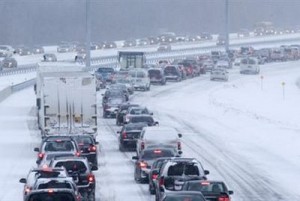
Any insurance claims adjustor will tell you that when snow falls, accidents and accident-related fatalities rise.
Winter may still be weeks away according to the calendar, but winter weather has already descended upon much of the country.
The best way you can avoid being just another accident statistic is to practice safe winter driving tips. We’ve compiled several for you:
- Before you leave, clear all snow and ice from the windows and lights of your car, as well as the hood and the roof.
- Check the road conditions along your route before you leave home. In most states, you can do this by calling 511 from any phone.
- While driving, use extra caution. Pay attention to the road around you, don’t try to “out-drive” the conditions (speed limits are based on dry roads, by the way) and be sure to leave extra room for stopping on slick surfaces. You’ll also want to look farther ahead on the road than you usually do.
- Watch for snowplows and maintenance vehicles. Most states require drivers to either slow down or move over when approaching road maintenance vehicles – including snowplows – which are parked at the roadside and have their lights flashing. If you do approach such a vehicle during a winter storm, and have to change lanes, be extremely careful as the passing lane may be in worse shape than the driving lane, or there may be a ridge of snow between them. Remember, also, to stay 200 feet behind snowplows, and not to pass them on the right.
- As long as we’re talking about other vehicles, remember that trucks are heavier than cars and take longer to respond and to stop – give them extra room.
- Avoid the use of cruise control in wintry conditions. A road that looks clear may have patches of ice, and the short touch of the brakes required to deactivate cruise control can cause you to lose control.
- Speaking of brakes, use them early, and use them correctly. This means not pumping anti-lock brakes – the guideline with those is “stomp and steer.”
- Finally, if you’re driving a 4×4 remember that while four-wheel drive will help you get going faster than two-wheel drive, it will not help you stop. As well, bear in mind that most 4x4s are heavier than typical passenger vehicles, and might, like regular trucks, take longer to stop. Don’t ever become too confident in your 4×4’s traction.
Accidents may be more common in winter road conditions, but by following basic safety precautions, you won’t be one of the victims.





